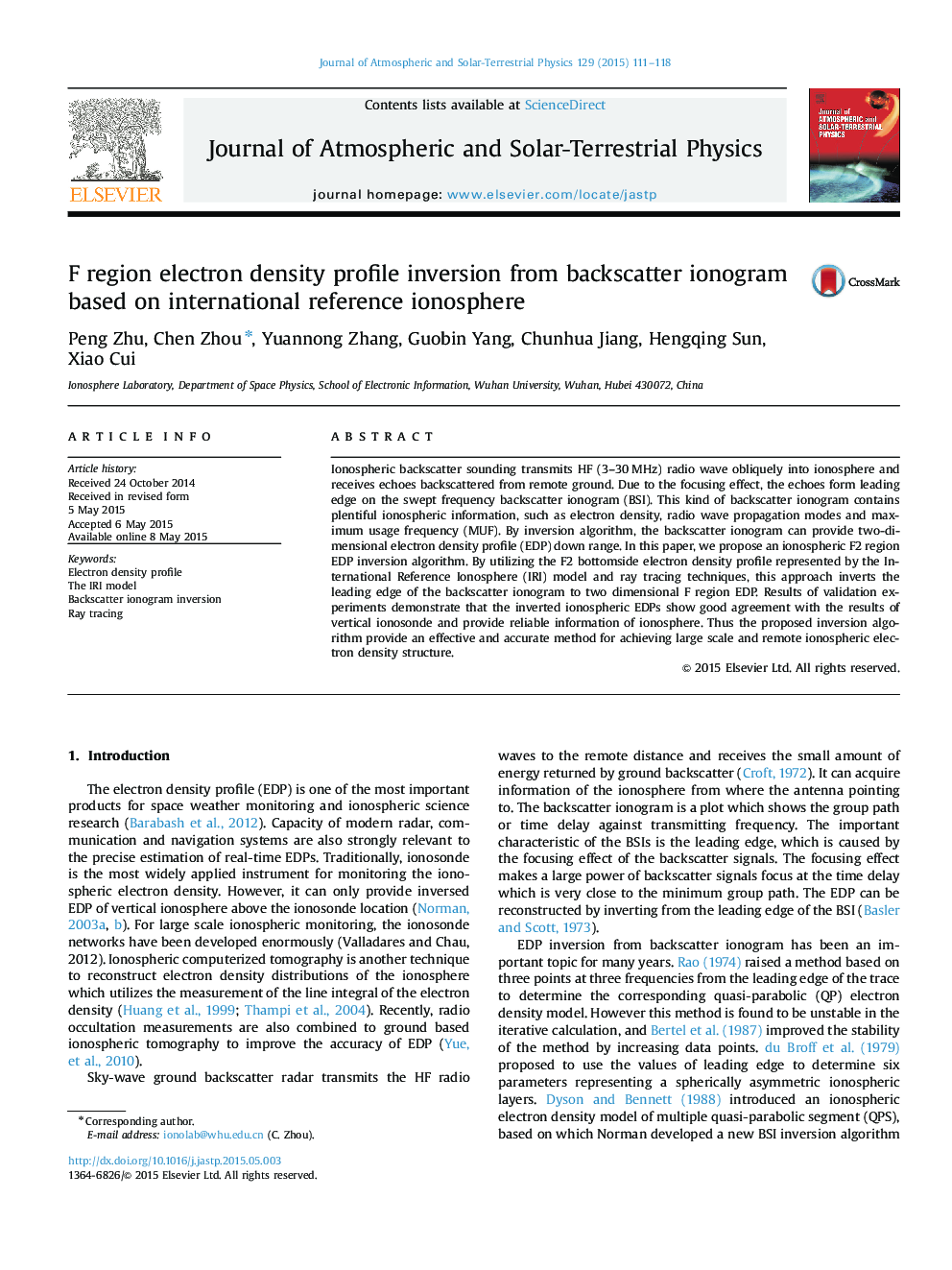| Article ID | Journal | Published Year | Pages | File Type |
|---|---|---|---|---|
| 1776430 | Journal of Atmospheric and Solar-Terrestrial Physics | 2015 | 8 Pages |
•We report a new backscatter ionogram inversion method based on the IRI model.•Results show good agreement with that of vertical sounding.•It presents the temporal and spatial variations of F2 region ionosphere.•It provides improved EDPs for space weather monitoring and ionospheric research.
Ionospheric backscatter sounding transmits HF (3–30 MHz) radio wave obliquely into ionosphere and receives echoes backscattered from remote ground. Due to the focusing effect, the echoes form leading edge on the swept frequency backscatter ionogram (BSI). This kind of backscatter ionogram contains plentiful ionospheric information, such as electron density, radio wave propagation modes and maximum usage frequency (MUF). By inversion algorithm, the backscatter ionogram can provide two-dimensional electron density profile (EDP) down range. In this paper, we propose an ionospheric F2 region EDP inversion algorithm. By utilizing the F2 bottomside electron density profile represented by the International Reference Ionosphere (IRI) model and ray tracing techniques, this approach inverts the leading edge of the backscatter ionogram to two dimensional F region EDP. Results of validation experiments demonstrate that the inverted ionospheric EDPs show good agreement with the results of vertical ionosonde and provide reliable information of ionosphere. Thus the proposed inversion algorithm provide an effective and accurate method for achieving large scale and remote ionospheric electron density structure.
